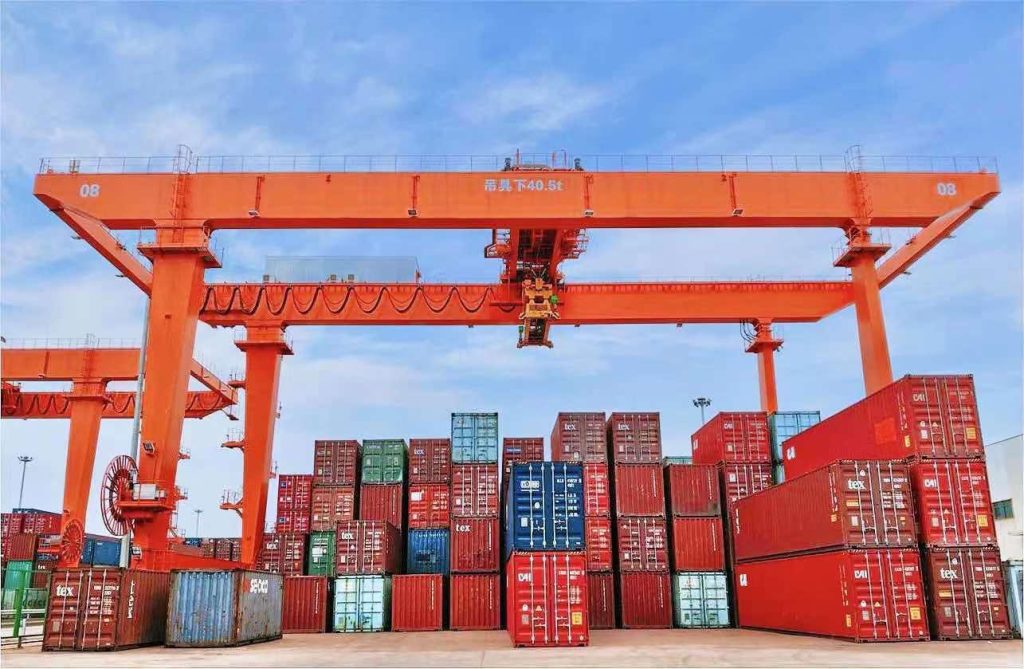
In modern industrial fields, equipment uptime and maintenance cost control are crucial to a company’s operational efficiency. To address the high maintenance costs and unexpected downtime caused by frequent crane malfunctions, predictive maintenance systems have emerged. By integrating AI technology and data analytics, this proactive maintenance strategy can predict equipment failures in advance and optimize maintenance schedules. This not only extends crane uptime but also significantly reduces maintenance costs. This article will explore how AI-driven predictive maintenance helps the crane industry improve productivity and enhance equipment safety.
AI Enhances Crane Uptime and Reduces Maintenance Costs
Predictive maintenance is a proactive strategy designed to prevent downtime caused by crane equipment failures. AI technology and data analysis are used to predict when equipment might fail, preventing unexpected downtime. Maintenance schedules are then updated based on the predictive data. By incorporating AI technology into crane maintenance, not only is crane uptime effectively extended, but maintenance costs are also greatly reduced. This approach allows for further optimization of maintenance plans, enhancing equipment safety, productivity, and lifecycle value, while significantly reducing the time and cost associated with emergency repairs.
Optimizing Asset Maintenance Strategy: How Does Predictive Maintenance Improve Productivity?
A single failure in a Container Gantry Cranes can trigger a domino effect that impacts the entire port operation, with huge consequences. Severe crane downtime often requires multiple electrical experts to restore functionality, which is costly. Additionally, there are indirect losses caused by delayed shipping schedules. Predictive maintenance is a key measure to prevent such occurrences.
Crane Data as the Source
Crane preventive maintenance relies on deep performance data to identify potential weaknesses, challenges, and prioritize maintenance tasks.
In ports, for example, portal crane generate a massive amount of data daily. This data comes from various sensors, crane management systems, maintenance systems, and other related sources. Predictive maintenance systems integrate these data sources to generate algorithms that predict the type of failure and the likely time of occurrence.
Artificial intelligence and machine self-learning are used to predict the possibility of crane downtime
At the core of predictive maintenance solutions are two AI technologies: supervised learning and unsupervised learning.
For frequently occurring failures, such as spreader malfunctions, brake wear, or wire rope slack, supervised learning techniques like LSTM neural network algorithms are applied. These algorithms learn from historical data patterns and apply them to current data to predict potential failures within a given time frame.
For less frequent failures, such as hoist gearbox malfunctions, unsupervised learning techniques like autoencoder neural network algorithms are used. These algorithms learn the patterns of a crane’s normal operations and compare them to current data, issuing alerts when data deviates from normal values.
Integrating Data Science with Engineering Knowledge
We integrate data science expertise with crane technology and experience to deliver higher business value to users. AI brings limitless potential to ports and terminals. We continue to evolve through challenges, gradually integrating innovative technologies into various digital products. This technology offers the following benefits:
1. Lower Maintenance Costs
Unlike reactive repairs, predictive maintenance systems identify cranes that are likely to fail in advance, greatly reducing maintenance costs. Predictive maintenance also prevents the chain reactions caused by equipment failures.
2. Improve Safety and Productivity
Maintenance plans and schedules based on predictive maintenance systems significantly reduce or even eliminate unexpected failures. Equipment is maintained before abnormal conditions occur, greatly reducing accident risks, ensuring operational safety, improving productivity, and increasing the equipment’s lifecycle value.
3. Extend Crane Uptime
Predicting potential failures enables the crane maintenance team to carry out preventive maintenance when the equipment is not in operation. This not only extends the crane’s operational uptime but also makes maintenance work more efficient.
In Summary
AI-driven predictive maintenance systems have brought revolutionary changes to the crane industry. By accurately predicting equipment failure times, companies can effectively reduce downtime and optimize maintenance plans, significantly improving productivity and equipment safety. Meanwhile, reduced maintenance costs and extended equipment lifespan create more long-term value for businesses. As technology continues to evolve, AI will further drive the crane industry toward a more efficient and intelligent future.
Information contained on this page is provided by an independent third-party content provider. Binary News Network and this Site make no warranties or representations in connection therewith. If you are affiliated with this page and would like it removed please contact [email protected]



Comments